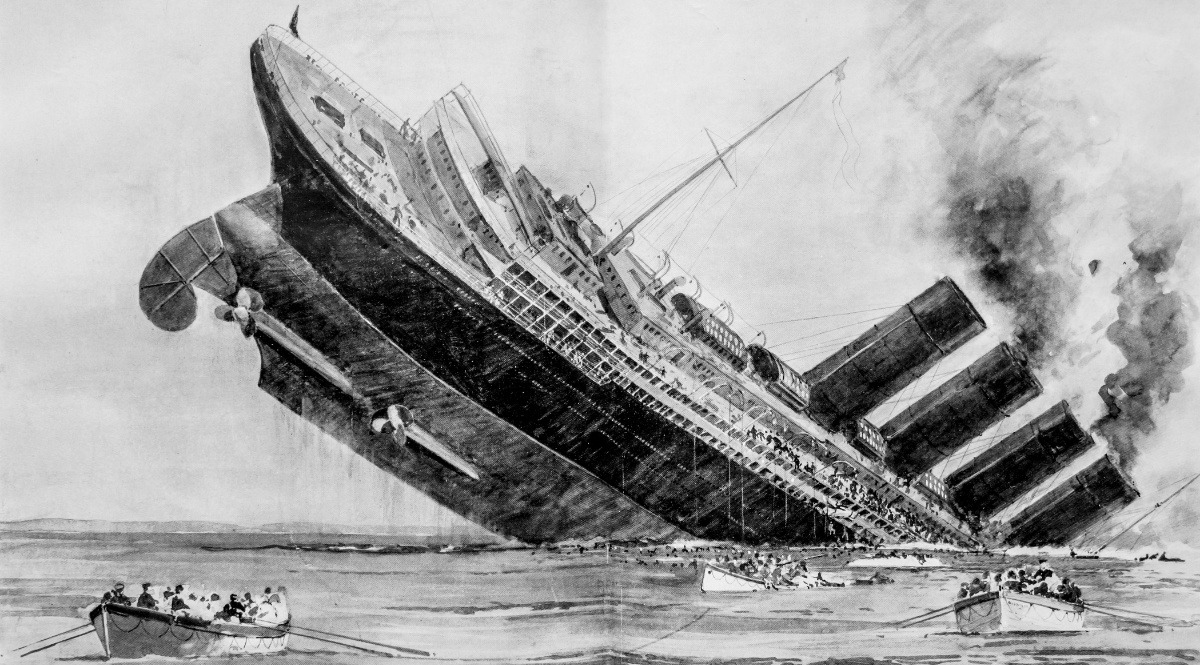World War I was unlike any war that had ever gone before. Not only did it involve a large portion of the nations of the world, but it also involved a lot of new military technology. Much of this new technology had never been used in battle before—specifically that of submarines. Submarines completely upended the ancient art of war at sea, and at first, ships didn’t know how to deal with them. On May 7, 1915, this led to disastrous consequences for more than a thousand people aboard the RMS Lusitania, in an incident that changed the course of the war.
Initially, America took a stance of neutrality, wanting no part in the war in Europe. However, Britain was an important trading partner of the United States. Therefore, when the Germans tried to blockade the British Isles, America wasn’t inclined to listen. America still remained silent when the Germans announced unrestricted submarine warfare would be waged on any and all ships in British waters.
In May of that year, a number of New York newspapers published warnings that Americans traveling on British ships did so at their own risk. One of these papers ran the warning right alongside an advertisement for the sailing of the RMS Lusitania from New York to Liverpool. Unfortunately, not many passengers paid heed.
On May 7, shortly after the RMS Lusitania entered British waters, it was identified by a German U-boat (their term for a submarine), which promptly launched a torpedo at it. Although the captain had been advised to take precautions against submarine attacks, he had no real idea how to do that. The Lusitania sank in 20 minutes, killing 1,198 people and leaving just 761 survivors. The RMS Lusitania was a passenger ship, and many of the dead were Americans. This led to public opinion in America turning sharply against Germany and contributed to America’s entry into the war.

